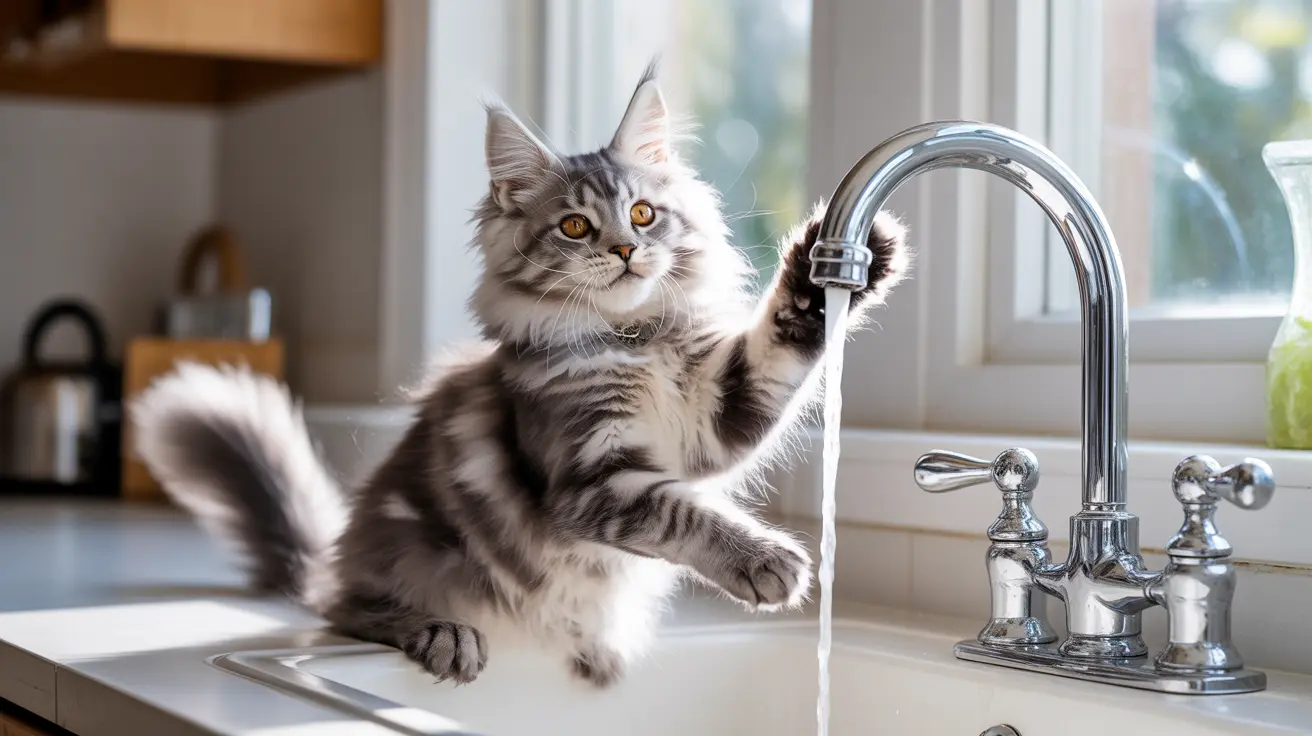The Natural Instinct for Running Water
Cats are naturally drawn to running water due to their evolutionary instincts. In the wild, moving water sources like streams and rivers are typically safer and fresher than stagnant pools, which may harbor bacteria or other contaminants. This ancestral wisdom remains encoded in our domestic cats' behavior patterns.
Additionally, running water is more visible and audible to cats, making it easier for them to locate and assess. The movement and sound of water from a faucet can be particularly attractive to their keen senses.
Common Bowl-Related Issues
Whisker Fatigue and Discomfort
Many cats experience what's known as whisker fatigue when drinking from traditional bowls. Their sensitive whiskers can become overstimulated when repeatedly touching the sides of narrow or deep containers, making the drinking experience uncomfortable.
Bowl Placement and Environmental Factors
The location of water bowls can significantly impact a cat's willingness to use them. Bowls placed near food or litter boxes may be instinctively avoided, as cats naturally prefer to keep their water source separate from these areas.
Health and Hydration Considerations
Proper hydration is essential for cats' overall health, particularly for their kidney function and urinary tract health. Cats who primarily eat dry food need to drink more water to compensate for the lack of moisture in their diet.
While drinking from the sink isn't inherently harmful, it's important to ensure your cat has consistent access to clean water, especially when you're not available to turn on the faucet.
Solutions and Alternatives
Water Fountains
Pet fountains can be an excellent compromise, offering the moving water cats prefer while ensuring constant availability. These devices often include filters to keep the water clean and fresh, making them particularly appealing to discerning felines.
Bowl Modifications
Consider using wide, shallow bowls made of stainless steel or ceramic materials. These materials don't retain odors or leach chemicals like plastic can, and the wider design helps prevent whisker fatigue.
Environmental Adjustments
Try placing multiple water sources throughout your home, especially in elevated locations that make your cat feel secure. Keep bowls clean and refresh the water daily to maintain its appeal.
Frequently Asked Questions
Why does my cat only drink water from the sink instead of their bowl?
Cats often prefer sink water because it's fresh, moving, and typically cooler than bowl water. This preference stems from their natural instinct to seek running water, which is usually safer in the wild.
How can I encourage my cat to drink from a water bowl rather than the faucet?
Try using a pet fountain, placing multiple wide bowls in quiet locations, and keeping the water fresh. Gradually introduce these alternatives while making them more appealing than the sink.
What type of water bowl is best to prevent whisker fatigue in cats?
Wide, shallow bowls made of stainless steel or ceramic are ideal. These designs prevent whisker interference while drinking and are easy to keep clean.
Is it safe for cats to drink running water from the sink or faucet?
Yes, it's generally safe for cats to drink from the faucet, but ensure they have alternative water sources available when you're not around to turn on the tap.
What health risks can occur if my cat doesn't drink enough water and prefers the sink?
Insufficient water intake can lead to dehydration, urinary tract issues, and kidney problems. If your cat only drinks from the sink, ensure they have consistent access to water through alternative means like pet fountains.
Conclusion
While drinking from the sink is a common and natural behavior for cats, it's important to provide alternative water sources that meet their instinctual preferences while ensuring consistent access to fresh water. By understanding and addressing your cat's water preferences, you can help maintain their proper hydration and overall health.






